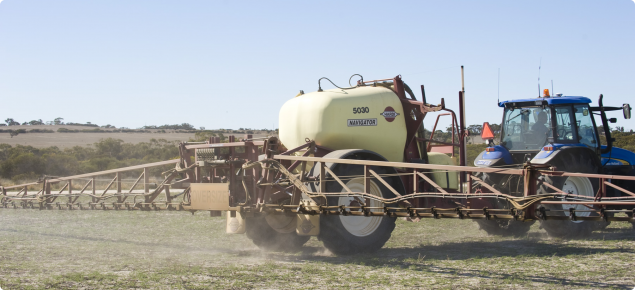The Australian Pesticides and Veterinary Medicines Authority (APVMA) has approved two new 2,4-D HVE herbicides and cancelled 11 other products as part of its ongoing review of 2,4-dichlorophenoxyacetic acid (2,4-D).
The two approved products are Crop Care Ester 800 Herbicide (800g/L 2,4-D present as the ethyl ester) and Nufarm Estercide 800 Herbicide (800g/L 2,4-D present as the ethyl ester). Their revised labels meet the new APVMA requirements.
These two products are only registered in Western Australia and can be used for summer or winter spraying. Copies of their labels can be found on the APVMA website by using the Public Chemical Registration Information System Search (PubCRIS).
Supply of the 11 cancelled 2,4-D HVE products ceased on 31 August 2013. Products already purchased can only be used in winter between 1 May and 31 August 2014 (inclusive). The use of these products is not permitted after 31 August 2014. Other conditions of use for these 11 products can be found on APVMA Permit 14329.
Cancelled 2,4-D HVE products include:
- Chemag Ester 800 herbicide
- Sipcam Siester 800 Herbicide
- 4Farmers 2,4-D Ester 800 Herbicide
- Halley 2,4-D Ester 800 Herbicide
- Conquest Ester 800 Selective Herbicide
- Kenso Agcare Ken-Ester 800 Herbicide
- WSD 2,4-D Ester 800 Herbicide
- Rotam 2,4-D Ester 800 Herbicide
- Crown 2,4-D Ethyl Ester 800 Selective Herbicide
- Genfarm 2,4-D Ester 800 EC Herbicide
- Dow Agrosciences Ester 800 Herbicide.
Farmers are reminded that phenoxy herbicides can damage sensitive crops and therefore they should follow the label directions, using low pressure, coarse or larger spray droplet sizes and avoid spraying under inversion conditions. Under inversion conditions spray droplets can remain suspended for some time and travel considerable distances.
Also, be aware the Agriculture and Related Resources Protection [Spraying Restrictions] Regulations are still in force. These restrict the application of 2,4-D HVE in the Swan Valley, Geraldton and Kununurra areas. They also restrict application on all other areas within 10km of a commercial vineyard or tomato garden.

